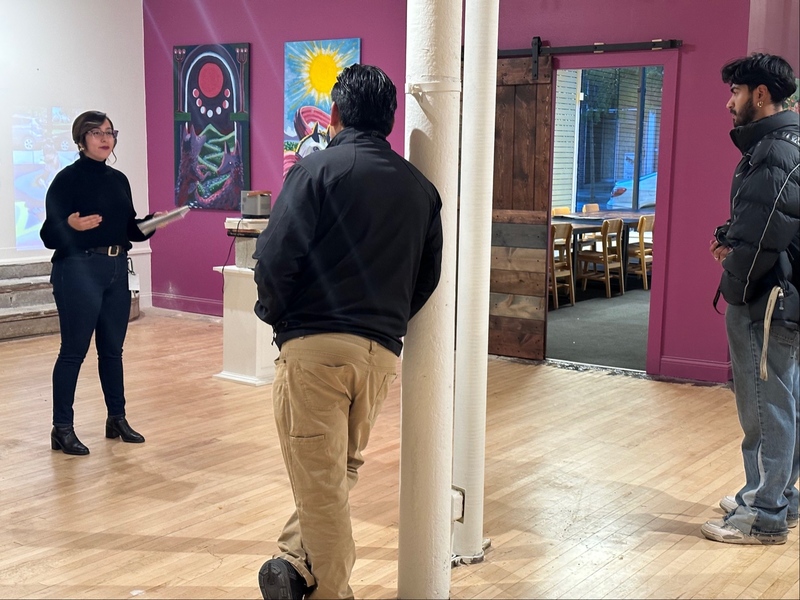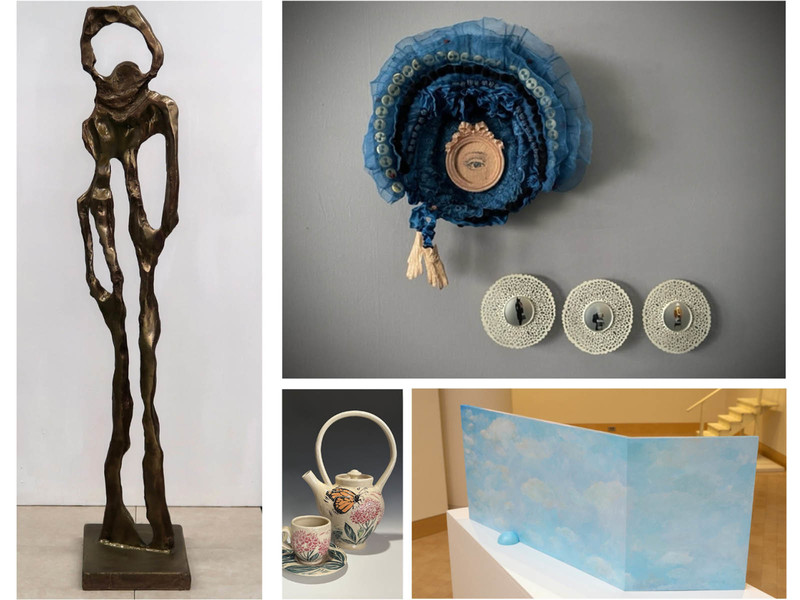This article is in a series by emerging creatives at Milwaukee Institute of Art and Design (MIAD) who explore the many forms of art in the Milwaukee area.
The Historic Third Ward is known as the creative nucleus of Milwaukee, housing a range of art galleries and studios, performing arts centers, the Milwaukee Institute of Art & Design, sculptures and installations, interior design and architecture firms, and hosting art and music events.
Integration Healing, a local art therapy practice at 316 N. Milwaukee St., also hosts myriad art shows, like "The Nature of Me," that showcases the identities of several artists who use art as a way to process their life experiences and cope with their mental health.
Integration Healing, alternatively known by its Spanish name, Alivio Integral, was founded in 2017 by Art Therapist and Licensed Professional Counselor Ernesto Atkinson.
Atkinson was born in Antigua, Guatemala. He attended North Dakota State University where he initially studied architecture with the hopes of designing an architectural structure that could help individuals and families affected by the war in his home country. In school, he ended up falling in love with painting and received his Bachelor of Arts degree with an emphasis in Painting. The influence of Guatemala can be seen in his work, as Mayan-inspired profiles of humans fill the compositions.
In Guatemala, he delved into social work and did anti-human trafficking prevention. Atkinson returned to the United States and studied at the School of the Art Institute of Chicago, earning a Master in Art Therapy.
“My true goal is to give society a more colorful smile,” Atkinson says. He describes his art therapy approach as “elastic.”
The main gallery space of the clinic is filled with diverse pieces for "The Nature of Me" exhibit, where participants express their life experiences in many different mediums.
“Most of the materials come from the client," says Atkinson. "We all have an innate language in us. Some people use found objects like sticks, pieces of clay, jewelry, fossils; everything that the client likes that is innate in them – that activates their creativity – that’s what we use as materials.”
Psychotherapy and art therapy are applied simultaneously as artists explore their own mental state and issues that may range from ADHD, anxiety, and depression, to trauma and PTSD, family conflict, grief and much more.
An important part of the art therapy process is response art, which is created by the therapist. Atkinson is currently working on a series of 48 pieces that represent and respond to the experiences of his participants.
“Response art is how you have been affected by the session. It’s a way of perhaps understanding what the client is going through. You can present the art piece to the client and you can have a better understanding of what is happening.”
Traditional art is not the only form of treatment that Integration Healing provides. They also have an on-site yoga studio where yoga instructor Jenny Urbanek leads Kundalini yoga sessions. Atkinson praises his partner’s practice, explaining that it serves as a complement to the work he does.
“Jenny is amazing at knowing how to do what I’m missing – the meditation part, the physical part. She utilizes yoga that is modified for all the clients. There are some clients that cannot move that well so they use chair yoga.”
Something else that sets Integration Healing apart from other art therapy clinics is that it is a bilingual practice, where both English and Spanish are spoken, making it inclusive to Milwaukee’s Spanish-speaking community. Atkinson describes that it’s more than that, though.
“The approach here is multilingual. It’s not only bilingual. I speak English and Spanish but I have different kinds of languages. Art is one of the biggest languages and art speaks to everybody in multiple ways. It’s a very client-centered approach. When the client comes, the client becomes my teacher. Therefore, I learn from them, about them, with them.”
At Integration Healing, equality is integral. The human experience is unique for everyone, and Atkinson acknowledges that when he works with his participants. Yet, Integration Healing explores the core of our humanity.
“What is unique about Integration Healing? There is no hierarchy here. I am an artist. They are artists. Sometimes, yes, it does exist – the hierarchy of the knowledge of the therapist – but at the end of the day when I’m sitting with this person in front me, everybody is the same. I believe that we experience things differently, but we do experience. And that is the core of things, that we experience it.”







